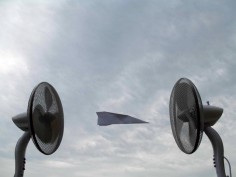CAMILLE LAURELLI
Камиль Лорелли
source: smirnovartsorokin
What Camille Laurelli does most is fixating the art project which has occupied all of his living space. Building a successful carreer, rising to fame, becoming an integral part of the system — nothing of this interests him. Art is everywhere. Even Laurelli’s portfolio turns from a piece of information into an art project, as well as his Facebook account. He produces art about himself and for himself. He seeks something that could not be changed into art, but in vain. All that surrounds Laurelli becomes part of his art. The main topics of his work are the absurd and the everyday. Artistic exploration of the everyday is a difficult task, for, as Maurice Blanchot put it, “the everyday is what is most difficult to discover”, “the everyday is what we are first of all, and most often: at work, at leisure, awake, asleep, in the street, in private existence”. The everyday has no limits and that is why, when one makes it a central topic of one’s work, it becomes possible to never stop making art.
.
.
.
.
.
.
.
source: paris-art
Exposer Camille Laurelli ce n’est donc pas comme organiser une rétrospective, ce n’est pas non plus envisager l’exposition comme une occasion de production, ou de concrétisation de projets stratégiquement bienvenus ce serait plutôt quelque chose comme confier les clefs de son appartement à un ami pour les vacances, un ami dont on redoute qu’il ne déverse son chaos, vaisselle sale et linge mal séché, boîtes de pizza et canettes dans les plantes vertes.
Pourtant Camille Laurelli n’est certainement pas un artiste du chaos. Son capharnaüm personnel, rien de stabilisé, tout en décalage, dérapage, lignes de fuite et glissades apparaît comme une matrice qui organise le monde selon une logique différente. Certes, ça frotte, mais ça passe. Grâce à cette matrice à différences, cette étrange usine à produire des intervalles, que n’importe quoi (un oeuf, des chaussures, des mégots, encore des chaussures, un trousseau de clefs, un coton-tige…) peut subitement donner lieu à une oeuvre.
Et là aussi, ça frotte, mais ça passe. À première vue, il semble donc que Camille Laurelli soit un suractif. Mais pourtant, et ce n’est pas le moindre des paradoxes, tout cela aurait plutôt à voir avec une certaine paresse. Il semblerait bien que ce soit précisément là où ça se joue : pour Camille Laurelli, cela s’appelle donc également travailler. Et quand dans la récente vidéo Artist at work on le voit dormir, ronflant, bienheureux, il s’agit de donner le ton de l’ensemble de l’activité : une disponibilité sans limites, une ouverture maximale aux possibles.
Ainsi Camille Laurelli produit des images et des objets à l’envi (un oeuf dans lequel est en gestation un jeu de cartes, un marteau qui a planté son clou sur son manche, une bouteille de coca-cola dans laquelle sont conservés ses crachats, etc.) Il organise des événements ou gère des structures (après s’être occupé de la Résidence La Perruque, il met sur pied une résidence en Corse essentiellement pour regarder la mer).
.
.
.
.
.
.
.
source: arnoticiasyahoo
El artista Camille Laurelli quiso ver si era capaz de mantener a un avioncito de papel en el aire. Consiguió dos ventiladores de la misma potencia, procedió a enfrentarlos y colocó a la aeronave entre ambos. ¿Advinen qué pasó? ¡Milagro! Bueno, bueno, en realidad milagro nada. Es “un milagro aparente”, para usar la expresión del doctor Jorge Wagensberg, director de la Fundación laCaixa y artífice de las exhibiciones Abracadabra, ilusionismo y ciencia. Pues —continua el brillante divulgador científico— “una ilusión es crear un suceso de una probabilidad muy baja. Lo que nos emociona es ver que algo que parece burlar las leyes de la naturaleza se consigue con un conocimiento profundo de la naturaleza”.
En este caso, la explicación física es muy simple: cuando dos masas de aire chocan se genera un vórtice, produciendo presión negativa. Así logramos un efecto de succión. La impresión resultante es un juguete que parece navegar dentro de un “túnel de viento”.
.
.
.
.
.
.
source: smirnovartsorokin
Главным делом Камиля Лорелли является фиксация арт-проекта, который уже занял все его жизненное пространство. Ничего другого его не интересует: ни построение успешной карьеры, ни поиски славы, ни желание стать неотъемлемой частью системы. Искусство есть повсюду. Даже его портфолио, ровно как его страница на «Facebook», превращается из перечня информации в арт-проект. Он создает искусство о себе и для себя. Напрасно он ищет то, что не может быть превращено в искусство. Все, что окружает Лорелли, становится частью его творчества. Основными темами его работы являются абсурдное и повседневное. Художественное расследование повседневности — сложная задача, ибо, как пишет Морис Бланшо, «повседневность — это то, что сложнее всего обнаружить … повседневность — это то, чем мы являемся в первую очередь и чаще всего: на работе, на отдыхе, в сознании, во сне, на улице, в частном бытии». Повседневность не имеет границ, поэтому, когда она становится центральной темой твоего творчества, ты никогда не сможешь перестать создавать искусство.


